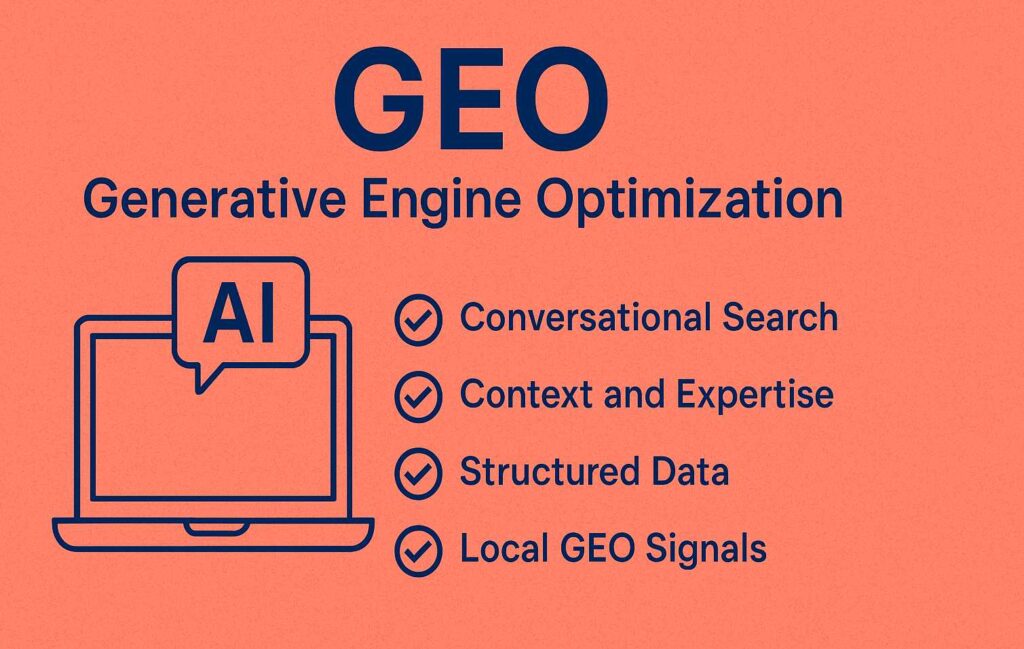
A small wellness brand asked for help because their website was not bringing in enough visitors. The design looked great, but the content did not appear in searches or AI results. They wanted to attract more local customers and show up in platforms such as ChatGPT and Google’s AI Overviews.
The MKTG Insight team introduced a strategy called GEO (Generative Engine Optimization). The goal was to help the website speak clearly to both people and AI search tools. Instead of relying only on old SEO methods, we focused on clarity, relevance, and local intent.
Our approach included:
-
Write pages in a natural, question-based style that matched the way people search.
-
Adde local words and phrases, including city names and landmarks, to make the business easier to find.
-
Create clear question-and-answer sections that fit perfectly with AI summaries.
-
Update metadata and schema to highlight the brand’s authority and trust.
After three months, the results were clear. The website’s organic traffic increased by 30%. The brand began to appear in both Google search and AI-driven recommendations. More people discovered them through local results, and online sales improved.
You may be confused what is GEO and how to do it, let us give you a detailed response.
What Is GEO (Generative Engine Optimization)?
GEO stands for Generative Engine Optimization.
It is the next evolution of SEO — focused on helping brands appear in AI-generated search results from tools like ChatGPT, Google Gemini, Bing Copilot, Perplexity, and other generative platforms.
Traditional SEO aims to help your website rank higher on Google’s list of links. GEO goes a step further: it helps your brand show up in the actual answers that AI tools generate when users ask questions.
For example:
When someone types, “What are the best skincare brands in Austin?” — Google’s AI Overview or ChatGPT may generate an answer mentioning certain brand names. A brand optimized for GEO has a higher chance to be included in that AI-generated response.
In short, SEO helps you rank, but GEO helps you get mentioned — right inside the AI’s spoken or written answers.
Why GEO Matters
Search is changing fast. Many people no longer click through pages of links. They ask questions directly to AI, and the AI summarizes answers.
That means if your brand is not optimized for generative engines, it could disappear from these new kinds of results — even if your SEO is strong.
GEO helps you:
-
Stay visible in AI-powered search results.
-
Build brand trust by being part of verified AI responses.
-
Reach voice and chat users who no longer rely on traditional search.
-
Future-proof your content for the next generation of digital discovery.
How to Optimize for GEO
MKTG Insight follows a structured method for GEO that balances human-first writing and AI-friendly structure.
1. Focus on Conversational Search
AI models answer questions in natural language.
Write your website content as if you are speaking to a real person. Include full questions and clear, short answers.
For example:
Instead of “Benefits of green tea,” write:
Q: What are the main benefits of drinking green tea?
A: Green tea helps with focus, energy, and overall wellness.
This format makes it easier for AI to pull your text directly into its answers.
2. Add Context and Expertise
Generative engines look for authoritative sources.
Include signals such as:
-
Author names and bios that show expertise.
-
Updated publication dates.
-
References to credible data or studies.
-
Structured headers (H2, H3) that organize information clearly.
AI tools scan these signals to decide which sources are trustworthy enough to include in generated summaries.
3. Use Structured Data and Schema
Schema markup tells search engines and AI exactly what your page contains.
Add schema for:
-
Organization / Local Business (your business details)
-
FAQ (your question-and-answer sections)
-
Product / Service (your offerings and reviews)
-
Article / Author (your content pieces)
These details improve your visibility in both Google and AI results.
4. Optimize for Local GEO Signals
If your business serves a local area, include:
-
City and neighborhood names in headings.
-
Directions or nearby landmarks.
-
Reviews or testimonials from local customers.
AI tools favor location-relevant answers. When users ask, “Who offers digital marketing near me?” — these local cues help you appear in the response.
5. Strengthen Topical Authority
AI engines value depth over volume.
Instead of posting hundreds of short blogs, create a few deep, helpful, and well-organized pages. Cover your topic from every angle so AI sees you as a trusted voice in your niche.
Link related pages together (internally) so that your site looks like a knowledge hub rather than a set of random articles.
6. Monitor and Adapt Regularly
Generative search evolves quickly.
Review your analytics and AI mentions every few months.
Check if your content is being cited or summarized by tools such as Perplexity or Google’s AI Overview.
Then update your content to keep it fresh, factual, and easy to interpret.
GEO in Simple Words
Traditional SEO is about ranking on Google.
GEO is about being quoted by AI.
Both matter — but GEO positions your brand for the next wave of search behavior, where people talk to machines instead of scrolling through pages.
MKTG Insight helps brands master both worlds: clear strategy, smart content, and technical precision. The result is stronger visibility, higher credibility, and faster growth in the AI-driven search era.